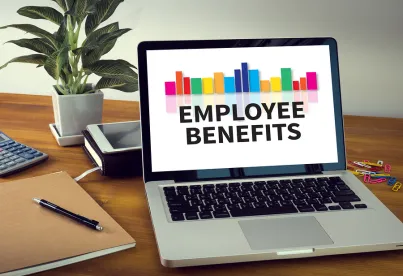Earlier this year we reported on legislative changes that modified the requirements related to hardship distributions from 401(k) plans. Recently, the IRS issued proposed regulations that if finalized will implement those changes.
Background
The Internal Revenue Code (the “Code”) and associated regulations generally place restrictions on participants’ ability to withdraw their elective deferrals from 401(k) plans. Similar restrictions exist for Section 403(b) plans.
However, there are exceptions to those rules. One such exception occurs if the plan allows for hardship distributions. A hardship distribution is a distribution that a participant can take under certain circumstances of immediate and heavy financial need. A hardship distribution can be taken only if it is necessary to satisfy that need. Immediate and heavy financial needs include things like certain medical care expenses, the cost to purchase a principal residence, certain tuition and educational expenses, the amount necessary to avoid eviction, certain burial or funeral expenses, and certain expenses to repair damage to a principal residence.
Elective Deferral Restrictions Following a Hardship Distribution
Under current IRS regulations, participants that take hardship distributions generally are not allowed to contribute to the plan for a six-month period following the hardship distribution. The proposed regulations would remove the six-month suspension rule for hardship distributions that occur on or after January 1, 2020. In other words, as of that date, plans cannot contain the six-month suspension rule.
The plan would be allowed (but not required) to eliminate the six-month suspension rule as of the first day of the plan’s 2019 plan year. The removal could be applied retroactively to those who took hardships prior to that date but are still in the six-month suspension period.
Prohibition on Hardship Distributions of Elective Deferral Earnings, QNECs and QMACs
The proposed regulations would remove the rule that prevents hardship distributions from elective deferral earnings, qualified non-elective contributions (QNECs) and qualified matching contributions (QMACs). This is not a required change, so plan sponsors have the discretion to determine whether and to what extent to adopt these changes.
Section 403(b) plans are more limited in the changes that can be made. Specifically, a Section 403(b) plan cannot eliminate the restriction preventing hardship distributions from elective deferral earnings, and hardship withdrawals of QNECs and QMACs are only allowed if those amounts are not held in custodial accounts.
Elimination of Plan Loan Exhaustion Requirement
In accordance with changes in the tax laws, the proposed regulations remove the requirement that participants take all available plan loans prior to taking a hardship distribution. This is a permissive change that plans can adopt for the 2019 plan year and beyond.
Substantiation Requirements
The proposed regulations would require that for hardship distributions that occur on or after January 1, 2020, the applicable employee must represent (in writing, electronically or in another form permitted by the IRS) that he or she has insufficient cash or other liquid assets to satisfy the immediate and financial need for which the hardship distribution is being sought. The plan administrator would be allowed to rely on this representation absent actual knowledge to the contrary.
Other Changes
As noted above, hardship distributions are only allowed in certain circumstances of immediate and heavy financial need, one of which is for expenses to repair damage to a principal residence that qualifies for a casualty deduction under the Internal Revenue Code. Recent changes in the tax limit the casualty deduction to expenses related to certain federally declared disasters (through 2025), with the unintended consequence of limiting the situations in which a participant could qualify for a hardship distribution due to home damage. The proposed regulations would clarify that the new limit on casualty loss deductions would not apply for purposes of hardship distributions.
In addition, the proposed regulations would expand the situations deemed to create an immediate and heavy financial need to include expenses and losses incurred by employees because of a federally declared disaster, if the employee’s principal residence or place of employment was in the disaster area at the time of the disaster.
Plan Sponsor Considerations
Plan sponsors may want to communicate with their third-party record keepers and document providers regarding changes in hardship distribution procedures. Many employers use volume submitter or prototype plan documents, and many of those document providers are making default changes to the hardship rules of those plans. Employers may need to determine whether they want to use the provider’s default changes or do something different. Similarly, sponsors of individually designed plans may also want to speak with their third-party administrators about any changes being contemplated.
The exact date that plan amendments will be required to implement the changes described above is not yet known. Generally, however, amendments will be required by the end of the second calendar year beginning after the IRS issues its annual “Required Amendments List” that includes changes in the hardship rules.
Plan administrators may also want to consider whether updates are needed to the plan’s summary plan description and other communications documents that describe the plan’s hardship rules, and to election forms and online election pages.



 />i
/>i

